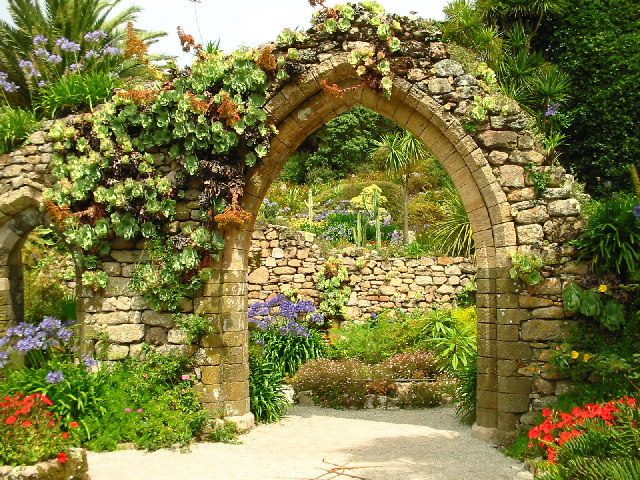In an archipelago known for its subtropical climate, Tresco
is the most subtropical island of them all, largely courtesy of the Tresco Abbey Garden, a riot of palms and other exotica set alongside a ruined 12th
century priory, and including a collection of ship figureheads in the Valhalla
Museum. The gardens were started by a
Hertfordshire squire called Augustus Smith who leased the islands from the
Duchy of Cornwall in 1834, and who built Tresco Abbey as his home beside the
existing ruins.
Tresco is just two
and a half miles long and a mile wide at its widest point and is one of just
five inhabited islands out of the 200-odd islands which make up the archipelago.
For such a small piece of land Tresco has seen a surprising amount of action in
the past, with three English Heritage properties acting as reminders of the
island’s history. The Old Blockhouse, also known as Dover Fort,
was built in the mid-16th century by the government of Edward VI as
protection against attack by the French.
The fort was occupied by the Royalists following the English Civil War
and was attacked by Parliamentary forces in 1651. King Charles’s Castle was another initiative
of Edward VI, and was garrisoned by
Royalists during the Civil War. Following
the attack in 1651 a third fort was built called Cromwell’s Castle. This round tower overlooking the stretch of
water between Tresco and Bryher is one of Britain’s few surviving Cromwellian
fortifications.
Meanwhile, for nature lovers there are two fresh water pools
near the Abbey Garden with several hides for watching birds such as dunlins and
plovers. The pools are visited by
migratory birds during spring and autumn.
For those who can’t bear to leave this balmy paradise, there is
accommodation on the island as well as a number of refreshment options. Tresco can be reached via a short boat
crossing from the main island in the archipelago, St Mary’s.
Live streaming webcam view towards Bryher, courtesy of The Flying Boat.
 | |
| The Abbey Garden, Tresco - geograph.org.uk - 15825. Photo by Darren Smith, via Wikimedia Commons. |
No comments:
Post a Comment